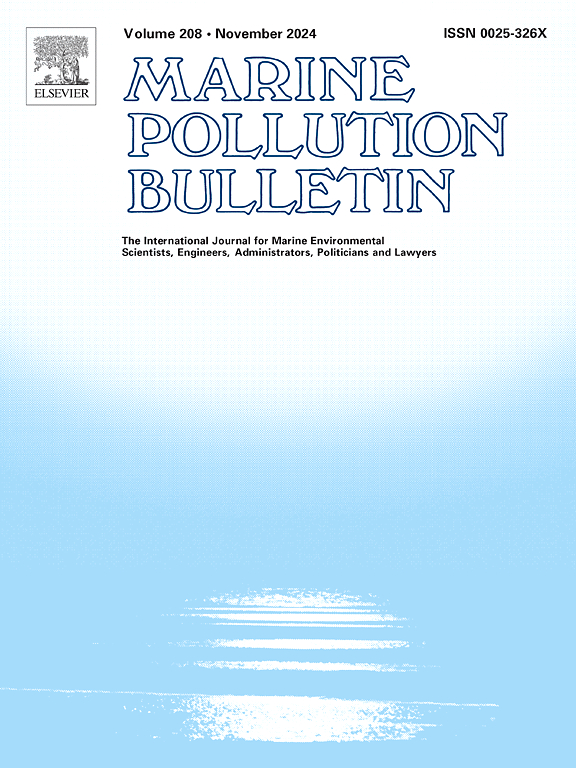Understanding the role of biological, environmental and human-impact factors on mercury concentrations in a demersal mesopredator shark
IF 4.9
3区 环境科学与生态学
Q1 ENVIRONMENTAL SCIENCES
引用次数: 0
Abstract
Anthropogenic activities, including the increase in pollutants, are triggering significant impacts on marine ecosystems. Mercury (Hg) is a particularly toxic pollutant, which poses critical threats due to its persistence and bioaccumulation in marine food webs. Using generalized additive models, this study investigates the effect of the main factors influencing the variability of Hg concentrations in the small-spotted catshark (Scyliorhinus canicula), an abundant and largely distributed demersal predator across the western Mediterranean Sea. THg values measured ranged between 1.8 and 10.6 mg·kg−1 (mean of 4.8 mg·kg−1 dw). Our results revealed that Hg concentrations were influenced by latitude, distance to cities, and body size of individuals. Higher Hg concentrations were measured in the samples captured in the northern areas of the study. The health risk assessment based on estimated daily intake showed that at low values of consumption rates (AC for elasmobranch or other marine fish), there was no health risk from Hg exposure, with weekly intakes of 0.0009 and 0.17 μg/kg bw week, respectively. In contrast, higher consumption rates (general fish and demersal fish) led to measurements above recommended limits, indicating potential health risks. This study underscores the importance of understanding Hg dynamics in marine ecosystems and highlights the need for species-specific human consumption rates to better estimate risk exposure.

了解生物、环境和人为影响因素对中捕食鲨鱼体内汞浓度的作用
人类活动,包括污染物的增加,正在对海洋生态系统产生重大影响。汞(Hg)是一种毒性特别大的污染物,由于其在海洋食物网中的持久性和生物积累而构成严重威胁。本文采用广义加性模型,研究了影响小斑点猫鲨(Scyliorhinus canicula)体内汞浓度变化的主要因素。小斑点猫鲨是一种分布广泛的西地中海底栖捕食动物。THg测量值在1.8到10.6 mg·kg - 1之间(平均值为4.8 mg·kg - 1 dw)。结果表明,汞浓度受纬度、城市距离和个体体型的影响。在研究的北部地区捕获的样本中测量到较高的汞浓度。基于估计每日摄入量的健康风险评估表明,在低摄取率下(依蓝鲶或其他海鱼的AC),汞暴露不存在健康风险,周摄入量分别为0.0009和0.17 μg/kg bw周。相比之下,较高的消费率(一般鱼类和底底鱼类)导致测量值高于建议限值,表明潜在的健康风险。这项研究强调了了解海洋生态系统中汞动态的重要性,并强调了需要特定物种的人类消费量,以更好地估计风险暴露。
本文章由计算机程序翻译,如有差异,请以英文原文为准。
求助全文
约1分钟内获得全文
求助全文
来源期刊

Marine pollution bulletin
环境科学-海洋与淡水生物学
CiteScore
10.20
自引率
15.50%
发文量
1077
审稿时长
68 days
期刊介绍:
Marine Pollution Bulletin is concerned with the rational use of maritime and marine resources in estuaries, the seas and oceans, as well as with documenting marine pollution and introducing new forms of measurement and analysis. A wide range of topics are discussed as news, comment, reviews and research reports, not only on effluent disposal and pollution control, but also on the management, economic aspects and protection of the marine environment in general.
 求助内容:
求助内容: 应助结果提醒方式:
应助结果提醒方式:


